Another free afternoon; another nice ride on the XT! I went south again, but this time went straight west to the coast.
My first photo stop was at Pescadero Beach, a beautiful little sandy beach. It’s part of the Pescadero Marsh Natural Preserve, which contains over 500 acres of coastal wetlands.
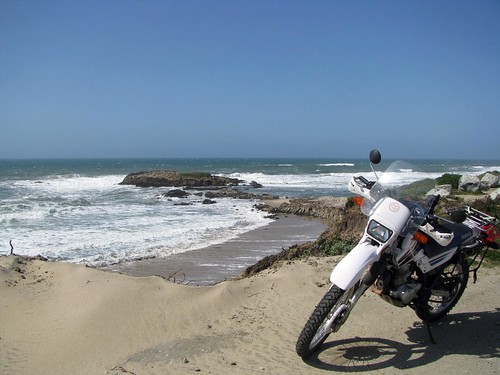
But for the real photography stop of the trip, I went a few miles south to the Pigeon Point Bluffs, which is my favorite place for photographs along the peninsula coast. It always amazes me that this little section is open to vehicles, but I’ve read the signs many many many times and apparently it’s A-OK. No camping, though.
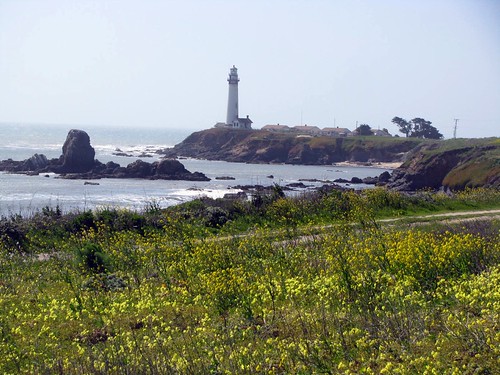
Too bad I’m allergic to all those yellow flowers! 😉
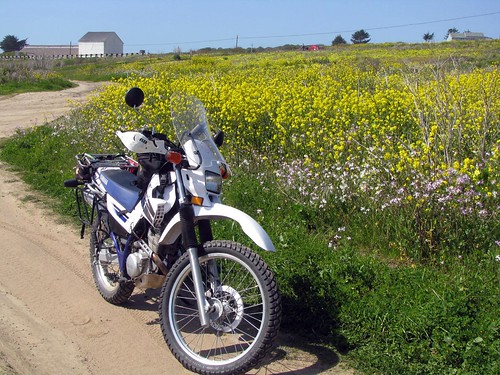
Pigeon Point is a neat little historical spot. The surrounding area was named after the Carrier Pigeon clipper ship which shipwrecked there in 1853. Unfortunately for the Carrier Pigeon, the lighthouse itself was first lit in 1872 and at 115′ is one of the tallest lighthouses in America.
The lighthouse itself is closed to the public; a piece of the exterior fell off in December 2001 and the state is taking its sweet time to evaluate the building for safety. Visitors can still wander the ground, though, or even stay at the on-site hostel.

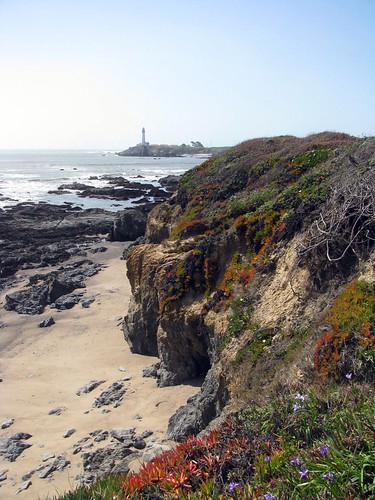
The bluffs facing away from the lighthouse:

What’s a photo stop without some bike porn?
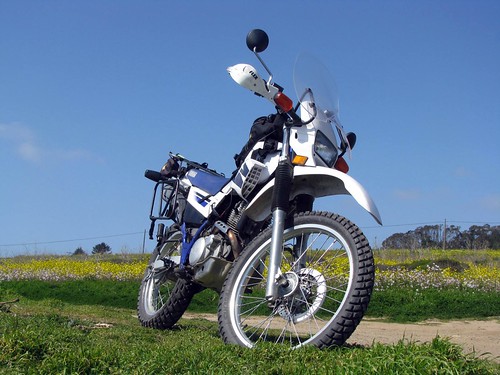

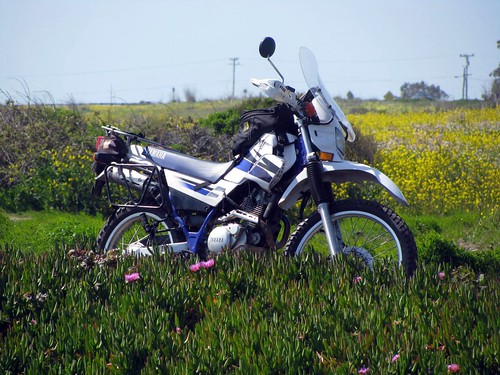
In a couple of weeks, there should be more ice plants blooming; I’ll probably go back and retake those last two photos.
OK, OK, enough Pigeon Point bluffs. I could spend hours there on a clear day.
I kept heading south on Hwy 1 until my next stop: Año Nuevo State Reserve.
I’d always wondered why the point was named for the new year; turns out that it was thus christianed by Spanish explorer Sebastián VizcaÃno on January 3, 1603 because it was the first point sighted in that year.
Año Nuevo is best known for its seasonal habitants: elephant seals! The reserve has one of the largest mainland breeding colonies in the word for northern elephant seals. The breeding season lasts from mid-December though late March, so when I visited, there were a few adult females left and a lot of weaners. A sign at the visitors center reported just over 2000 weaners as of February 28, 2009.
To get to the seals this time of year, you need a permit from the ranger when you first enter the park. No one checked mine after I entered the park, but you do need to carry it with you. Other times of the year, the seal area is only accessible via guided tours, but starting April 1 — coincidentally, the day I visited! — self-guided tours are fine (provided you have your permit!).
The main seal viewing area is a 1.6-mile walk from the visitors center. It’s a very easy hike along some marshlands, though bring water if it’s a warm day as the only drinking fountain on site is back at the vistors center.

The marsh area is home to the red-legged frog and the San Francisco garter snake — I didn’t see any frogs but I was momentarily ssurpised when a twig on the path slithered away from me.
Just after a little info kiosk on the path, you’ll come across the sand dunes. I didn’t have any trouble with the dunes even when wearing motorcycle boots, but I wouldn’t go out there in stilettos or anything.
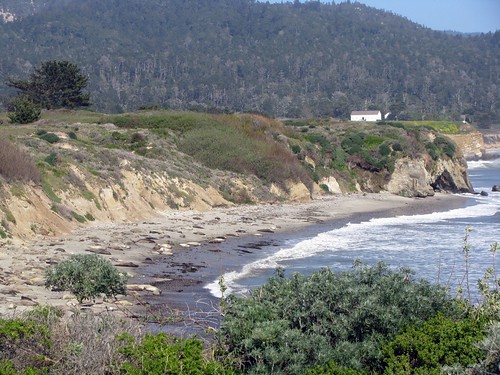
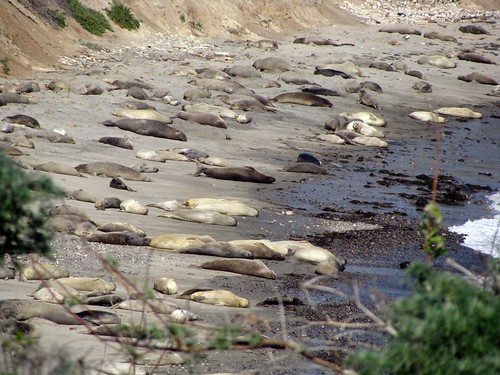
Can you spot the seal?

She wasn’t too happy that I was taking her photo!

We really are lucky to have two breeding colonies within a day’s ride. There are only about seven principal breeding areas in the world, most of which are on the California Coast. Other ride reports of mine have had many photos of seals from another big colony, Piedras Blancas down near Cambria.


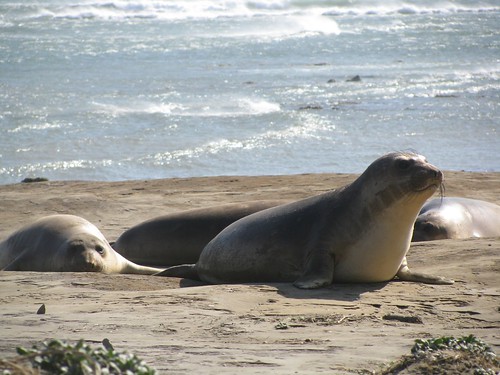
Does this video work? Sorry for the background noise; it was super windy!
After my hike, I was running a little late for retuning home, so I didn’t stop for photos on the return trip.
Here are a few on-board pics, though…you can tell it was a gorgeous day to cut home through the Santa Cruz Mountains!

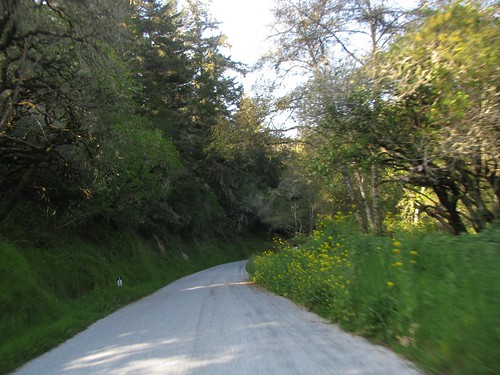
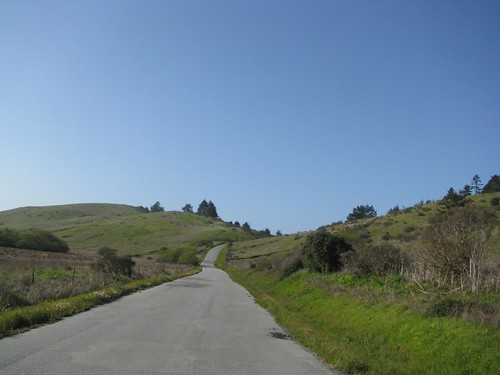
Why was I rushing home? Peter’s hockey team was playing in the league championship game! I’m proud to announce that The Sahara Deserts won the Winter 2008-09 Stanley Keg!
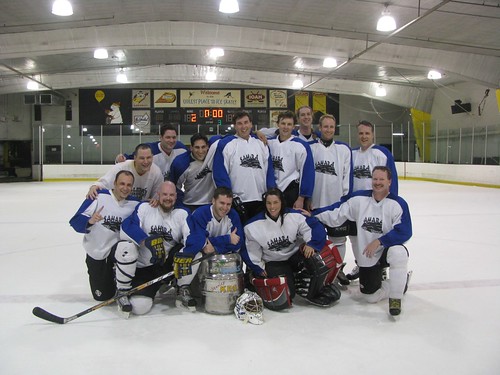
Trip odometer: 102 miles
Moving Time: 2 hours, 56 minutes
Average Moving Speed: 34.6 mph

